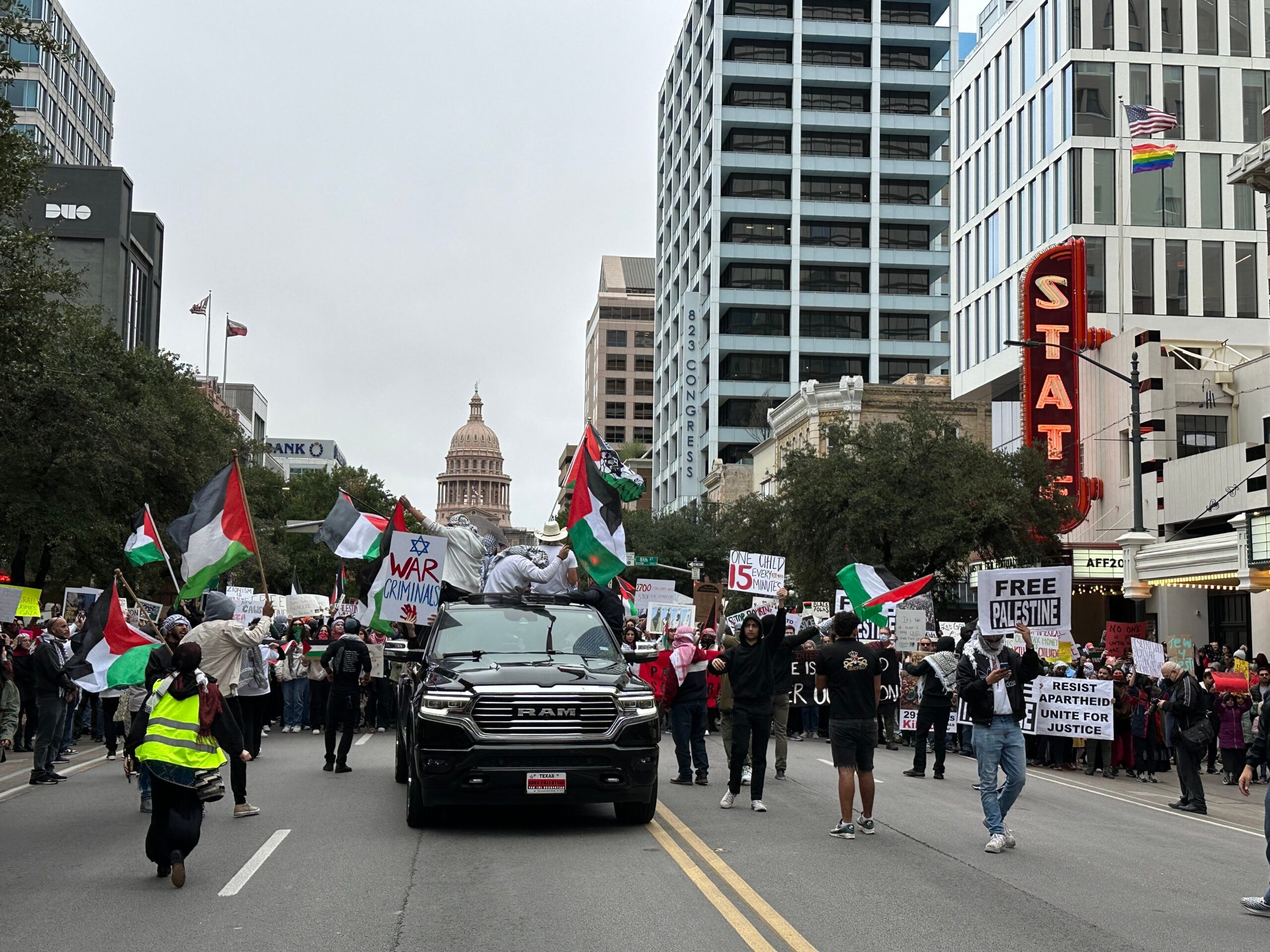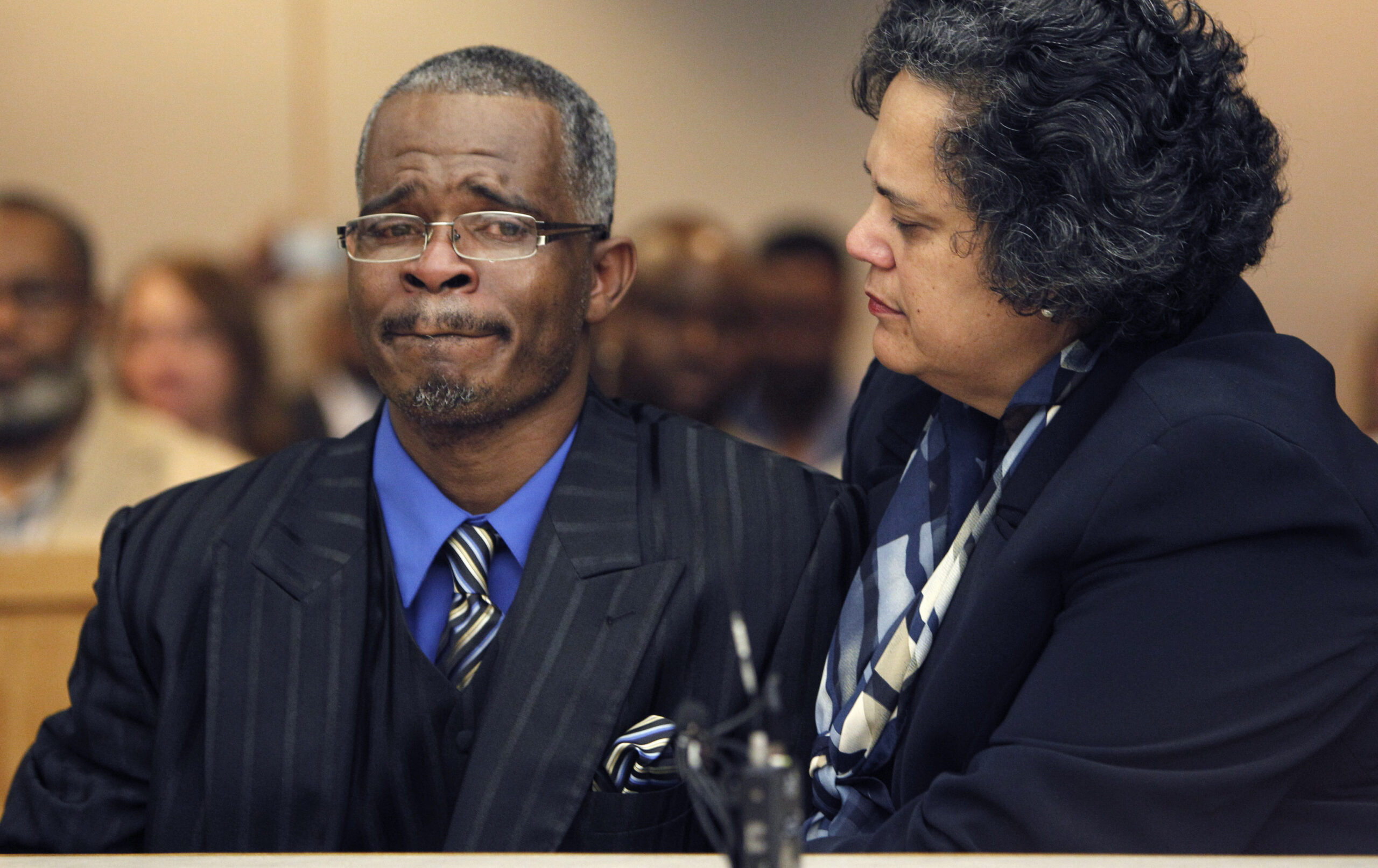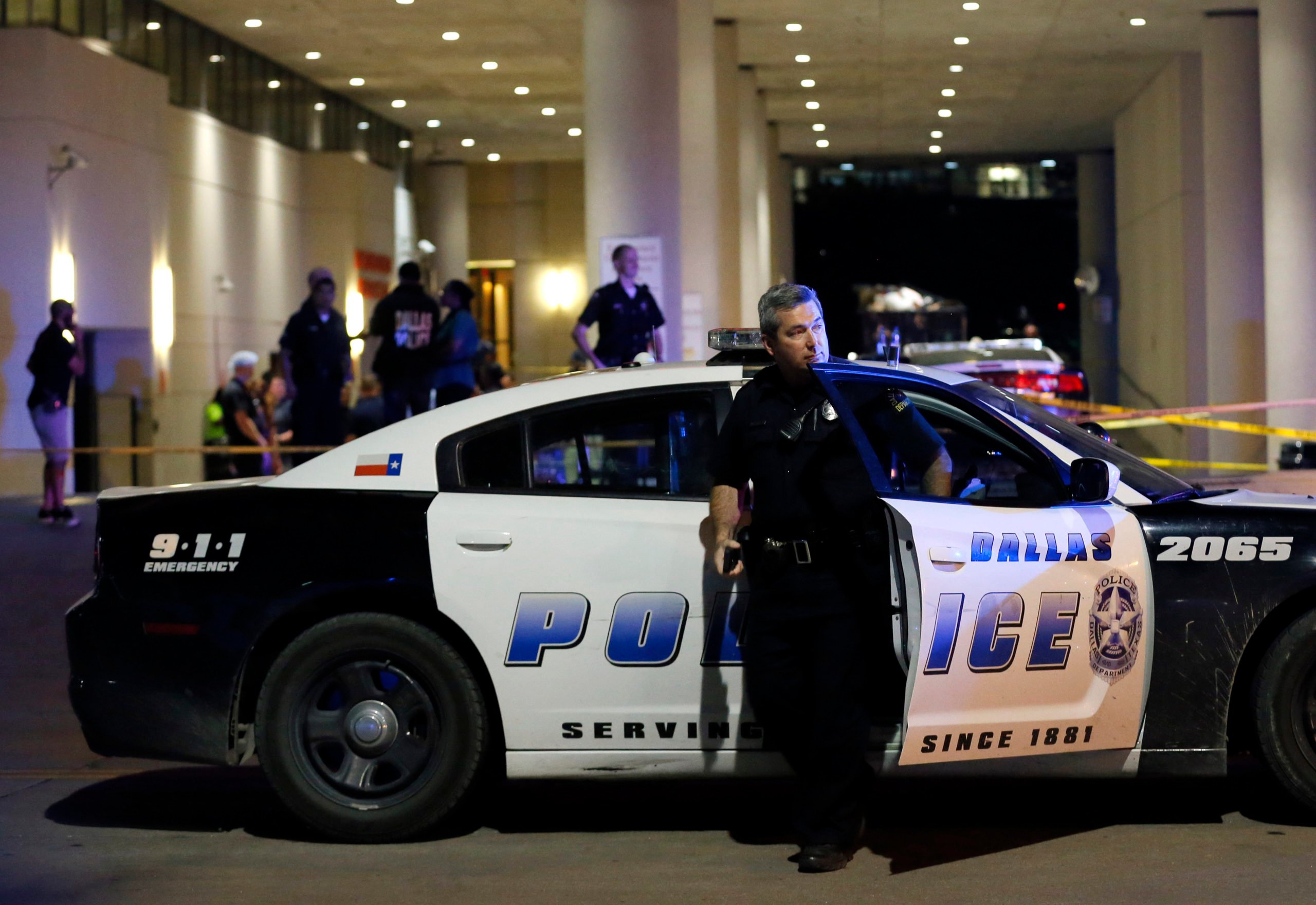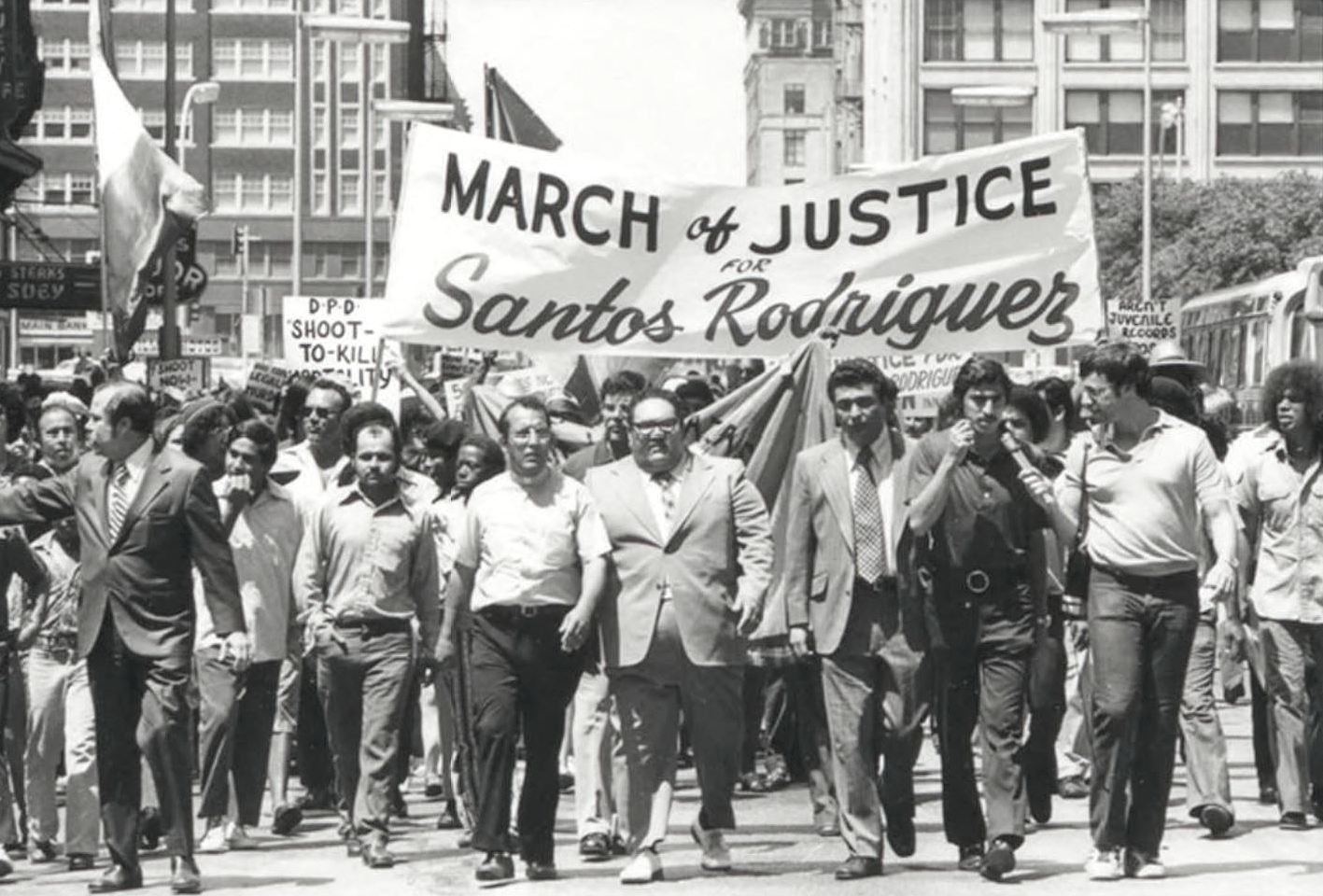
In Memory of Santos Rodriguez
Almost 50 years after his murder, Dallas is finally taking steps to memorialize Santos Rodriguez. But justice for his family may forever be out of reach.
Above: Four days after the death of Santos Rodriguez, the Dallas community held a March of Justice on July 28, 1973, to show their solidarity.
On July 24, 1973, Dallas police were called to investigate the theft of $8 from a gas station vending machine in Little Mexico, a Mexican American community in Dallas. The officers assigned to the case suspected brothers Santos and David Rodriguez, who lived in the neighborhood. Santos, 12, and David, 13, told the officers they didn’t do it, but they were handcuffed and taken to a police car where Officer Darrell Cain, who was white, began interrogating them. In an attempt to force a confession out of the brothers, Cain used his revolver in a terrifying game of Russian roulette. The officer held the gun to Santos’ head and pulled the trigger. The chamber was empty. When Cain pulled the trigger a second time, he shot Santos, killing him instantly in front of his older brother.
Santos’ murder sparked widespread outrage across Dallas, where tensions were already high due to police brutality and school desegregation efforts. A downtown rally in support of Santos drew as many as 5,000 people. The demonstration was initially peaceful but quickly devolved into a riot as the crowd grew larger. Cain was convicted of murder but, despite the calls for justice from the Mexican American community, he was sentenced to just five years in prison by an all-white jury and released after serving only half the sentence. David, who witnessed the horrific murder of his little brother, never recieved counseling or mental health care to cope with the trauma. Santos’ mother Bessie was never compensated for her loss, and still struggles financially.
For decades following the killing, city officials hadn’t even apologized to the Rodriguez family. But in recent years, due to relentless efforts by community members and activists, Dallas has finally made strides in commemorating Santos. The city will finally have a memorial, a statue slated to be unveiled in September, just two months after the 48th anniversary of Santos’ death. Advocates say the memorial will stand as an important symbol for how the city has changed since the tragedy, but also as a reminder for how many of the issues that caused so much suffering years ago remain.
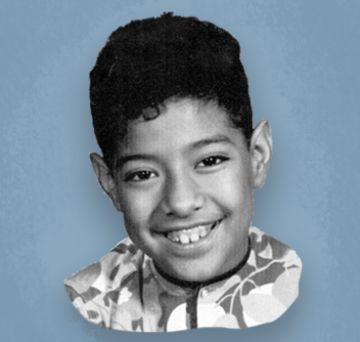
Today, any enduring trace of Dallas’ Little Mexico, the Mexican American community where Santos lived and lost his life, is dwindling under the shadow of Uptown’s posh high-rise buildings and luxury apartments. Growing up, Frances Rizo spent most of her weekends with her grandparents in Little Mexico. She says even long before Santos was murdered, it was common knowledge that police brutalized Dallas’ Mexican American community. “You were lucky if you were taken directly to jail. But usually, you went by the Trinity River bottom because they’d beat your ass before they took you in, just for kicks,” said Rizo, who’s spent many years working as a community organizer and has been part of the effort to get justice for Santos since the day he was murdered.
While she served on the board of the greater Dallas Community Relations Commission, Rizo says the commission received myriad complaints about police brutality. She recalls an incident in 1971 known as the Trinity River Massacre, in which two Hispanic men killed three police officers as they escaped from custody. According to Rizo, the hunt for those two men resulted in a number of violations against the Mexican American community. “We’ve known about this kind of police brutality all of my life, but after Santos, it told us that our children were being persecuted just like the adults were.”
Diana Orozco-Garrett attended the Dallas rally that occurred after Santos’ murder with her mother and sister. Her father, who knew the Rodriguez brothers while he was a teacher at William B. Travis elementary school, was too distraught by the incident to join them. Orozco-Garrett says that in the years since, there have been many attempts to memorialize Santos, with little success. “Commemorating Santos was always coming up, and it was always just not going anywhere, to my great disappointment,” she says. One of the disappointments was a failed plan to name Pike Park, formerly the heart of Little Mexico, after Santos. “The powers that be in Dallas did not want to be reminded of the event; they preferred the pretense that everything is OK,” Orozco-Garrett says.
Orozco-Garrett believes part of the reason Santos’ story wasn’t properly recognized by the City of Dallas was because of the prejudice they held against the family, particularly Bessie Rodriguez, who was in jail at the time for murdering her abusive boyfriend. It wasn’t until 2013 that Bessie received acknowledgement from the city for the loss of her son, when then-Mayor Mike Rawlings visited Bessie and apologized on behalf of the city for what happened to her family. Rizo says she’s thankful that Rawlings made the long-delayed gesture, but suspects he never would have done so if she and others hadn’t pressed for action. “Had we not kept up, it still wouldn’t have happened,” she says.
The fight for Santos didn’t stop there. Each year, on the anniversary of his death, community members and activists gather alongside Bessie to commemorate Santos. Last year, Dallas Police Chief Reneé Hall attended, pledging to Bessie that the Dallas Police Department was committed to change. Hall soon stepped down from her position, however, after criticism that DPD had a disproportionately aggressive response to protests in response to George Floyd’s murder that same summer.
Last month, Houston’s police chief similarly apologized for the death of Joe Campos Torres, who was beaten to death by Houston police in 1977. Police brutality is just as relevant as it was when Santos was killed, Orozco-Garrett says. “It’s just a daily barrage of incidents of police abuse against citizens of color, but back then there was no proof of that,” she says. “It’s important to show how far we’ve come and to see that in some ways, we may even be going backwards.”
Santos’ memorial is set to go up on September 18 in Little Mexico’s Pike Park, where Santos once used to play. Created by local artist Seth Vandable, community members hope that it will resonate with onlookers for generations to come.
“To have a statue of Santos Rodriguez is another way to acknowledge the existence of our people and how we’ve been treated, so that we don’t forget, lest we allow it to happen again,” Rizo says.
